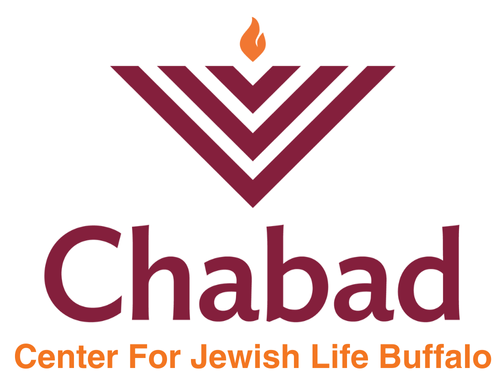What Is Shavuot and How Is It Celebrated?
Shavuot (שָׁבוּעוֹת in Hebrew, also pronounced Shavuos) is a two-day Jewish holiday that commemorates the momentous occasion when G‑d gave the Torah to the Jewish people at Mount Sinai over 3,000 years ago. It is preceded by 49 days of anticipation known as the Counting of the Omer, linking the spiritual liberation of Passover with the ultimate purpose of receiving the Torah.
Shavuot is celebrated through a variety of meaningful customs: refraining from work, lighting holiday candles, staying up all night to study Torah, hearing the reading of the Ten Commandments in synagogue, enjoying dairy foods, and participating in community and synagogue gatherings.
In the diaspora, Shavuot is observed for two days, beginning at sundown on the 5th of Sivan and concluding at nightfall on the 7th of Sivan. In Israel, it is a one-day holiday that ends at nightfall on the 6th of Sivan.
What Shavuot Commemorates
The word Shavuot means “weeks,” marking the culmination of the seven-week Omer counting period between Passover and Shavuot. These weeks are seen as a time of spiritual refinement and preparation for receiving the Torah.
The Torah was given by G‑d to the Jewish people on Mount Sinai on Shavuot more than 3,300 years ago. Every year, on Shavuot, Jews around the world spiritually reaccept this divine gift, and G‑d metaphorically “re-gives” the Torah to each individual and community anew.
This historic event is viewed not just as a moment in time, but as an ongoing, transformative spiritual experience that continues to shape Jewish identity. The sages compare the giving of the Torah to a wedding between G‑d and the Jewish people—Shavuot, therefore, also implies “oaths,” signifying the mutual pledges of loyalty and devotion made between G‑d and His people on that day.
In biblical times, two wheat loaves were brought to the Holy Temple on Shavuot, and it also marked the beginning of the bikkurim season, when the first fruits of the harvest were offered in gratitude to G‑d.
How Is Shavuot Celebrated?
- Holiday Candle Lighting
Women and girls usher in the holiday by lighting candles on both evenings of Shavuot. - All-Night Torah Study
It is customary to remain awake throughout the first night of Shavuot studying Torah—a reflection of deep dedication and spiritual readiness. - Reading of the Ten Commandments
On the first day of Shavuot, the Ten Commandments are read in synagogues. This reenactment of the Sinai experience invites all—men, women, and children—to be present and relive this foundational event. - Festive Meals & Dairy Delicacies
Special meals are shared in honor of the holiday. One of the most popular traditions is to enjoy dairy foods. Common Shavuot dishes include cheesecake, blintzes, quiches, and even pizza. This custom is rich with symbolic meaning, as dairy represents the purity and sweetness of Torah. - Yizkor Memorial Service
On the second day of Shavuot (or on the one day observed in Israel), the Yizkor memorial prayer is recited in remembrance of loved ones. - Reading the Book of Ruth
Many communities read the Book of Ruth on Shavuot. The story not only takes place during the harvest season but also highlights Ruth’s heartfelt commitment to Judaism and Torah. She became the great-grandmother of King David, whose passing occurred on Shavuot. - Floral Decorations
Homes and synagogues are often adorned with flowers and greenery to commemorate the lush, blossoming landscape of Mount Sinai at the time the Torah was given, according to tradition.
Shavuot FAQ
What is Shavuot?
Shavuot is a Jewish holiday that commemorates the giving of the Torah to Moses and the Jewish people at Mount Sinai. It is also called the Festival of Weeks, as it occurs seven weeks after Passover.
What does “Shavuot” mean?
Shavuot means “weeks,” referring to the seven-week period of preparation and spiritual growth following Passover, leading to the revelation at Sinai.
When is Shavuot celebrated?
Shavuot is celebrated on the 6th and 7th days of Sivan in the Hebrew calendar, which typically falls in late May or early June.
How long is Shavuot?
In the diaspora, Shavuot is two days long. In Israel, it is celebrated for one day.
How is Shavuot celebrated?
Shavuot is marked by lighting candles, studying Torah late into the night, hearing the Ten Commandments, eating festive meals (often featuring dairy), and reciting the Yizkor prayer.
Is work permitted on Shavuot?
Work is not permitted on Shavuot, with exceptions for food preparation using a preexisting flame and carrying within areas permitted by Jewish law.
Why do we eat dairy on Shavuot?
Dairy foods symbolize the sweetness of the Torah, likened to “milk and honey,” and reflect the simplicity and purity of the Torah’s teachings.
Why do we read the Book of Ruth?
The Book of Ruth reflects themes of devotion, loyalty, and the acceptance of Torah—making it particularly relevant to Shavuot.
Why do we stay up all night studying Torah?
This custom reflects our desire to correct the mistake of the Israelites, who, according to tradition, overslept on the morning the Torah was given.
When are the Ten Commandments read?
The Ten Commandments are read during synagogue services on the first day of Shavuot, often followed by festive gatherings or treats for children.
Who should attend the reading?
Everyone—including men, women, children, and even babies—is encouraged to attend the reading of the Ten Commandments, echoing the unity of the Jewish people at Sinai.
Are there specific customs associated with Shavuot?
Yes, including all-night Torah study, floral decorations, dairy meals, reading the Book of Ruth, and reciting Yizkor.
Is Yizkor recited on Shavuot?
Yes. Yizkor is recited on the second day of Shavuot (or on the one day in Israel), following the Torah reading.

